Back to top: Introduction
Overview
The main ceramic evidence for ED II in Urkesh/Mozan comes from tombs, including two large graves in the
Outer City, Oa4 on the west and Ob1 on the northeast. On the western side of the High Mound a burial, F2, dating to late ED II, was excavated near the highest portion of the S1 trench. This trench ran from the base of the
High Mound almost reaching the summit of the mound in this area. S2 is a sounding at the base of the S1 trench containing ED II ceramics.
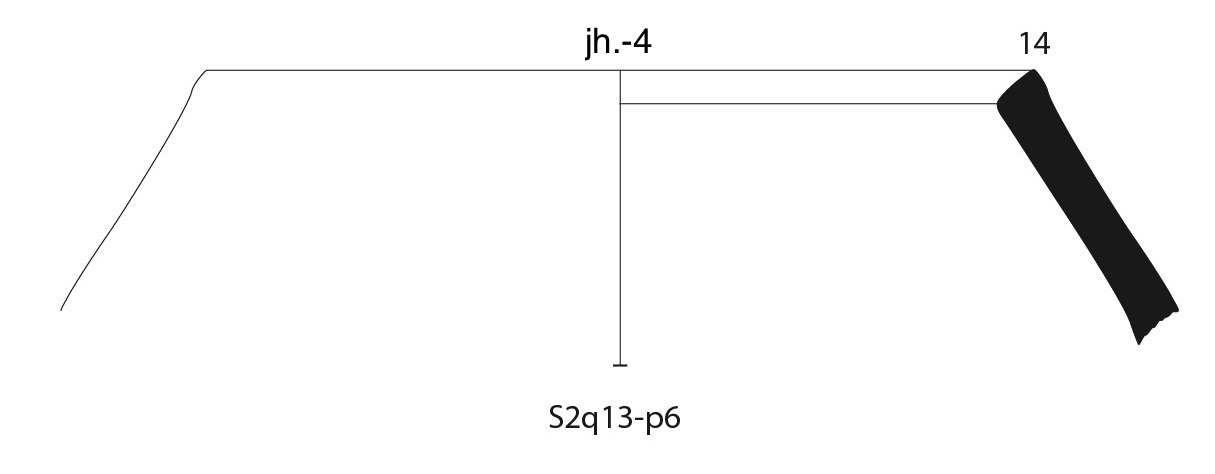
S2q13-p6 |
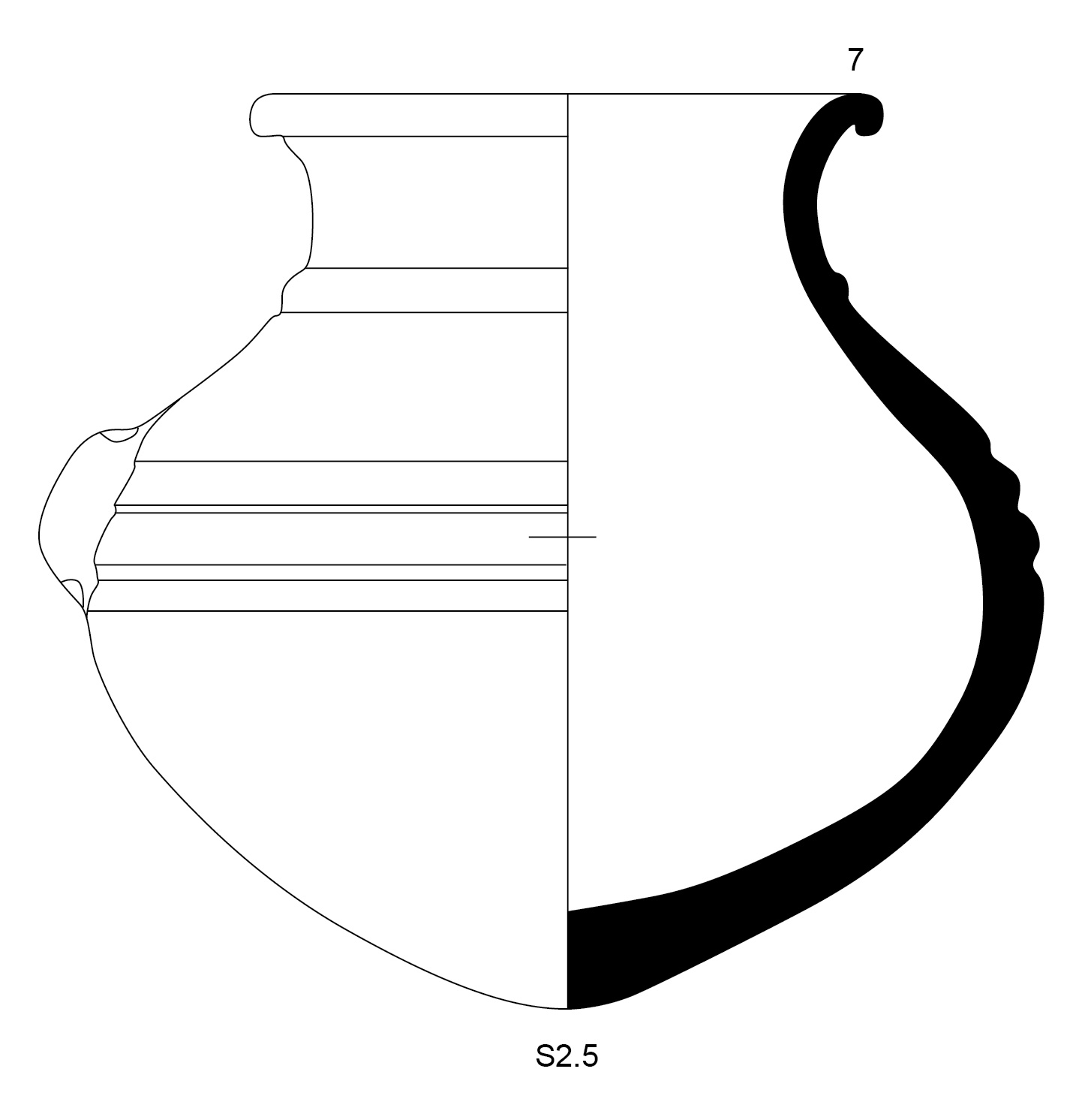
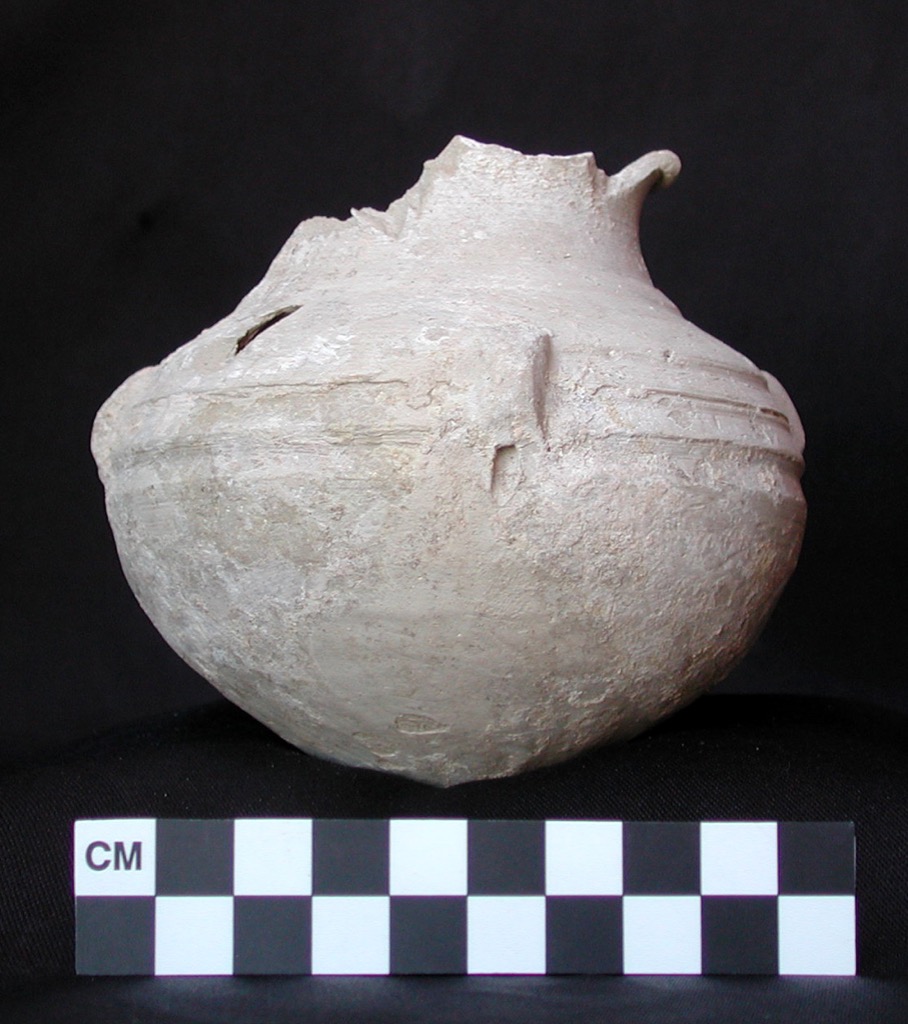
S2.5 |
Back to top: Introduction
Ceramic evidence from EDII Tombs
In the north-eastern part of the Outer City we discovered a tomb (Ob1) indicated by a large number of early Metallic ware sherds on the surface. Excavation here showed that it indeed was the burial place of two adults; they were entombed in a pit without any structure, whereas tomb Oa4, located on the western side of the Outer City was lined with large stones which functioned as the sides and part of the stone roof. Because the contents of Oa4 had been robbed, few ceramic vessels were found in it. Fortunately, the Ob1 tomb contained over one hundred vessels and a number of metal objects. The ceramics included an early form of Metallic ware conical cups and a number of late Ninevite V vessels with the grooved and incised designs typical of this period.
In addition to a number of undecorated vessels in shapes which reflected the Ninevite V pottery, there were several examples of a type of painted stand, painted in the Scarlet ware tradition. The paint, applied after firing, is bright red fugitive paint with black used on the borders and for designs inside the panels. The designs are only geometric and cover the entire stand. The typical Scarlet ware paint and the use of designs arranged in panels can be paralleled by examples from the south; the concept of tight overall patterning in geometric designs however is a northern characteristic. One similar Scarlet ware stand was published from Tell Chuera with a second one also mentioned in the publications.1 From the assemblage in this tomb it now becomes clear that the early development of Metallic ware overlapped with the latest stage of Ninevite V (e.g. Ob1q9998-p4) pottery and that this stage of development in both these wares coincided with a local development in Scarlet ware (e.g. Ob1.52).
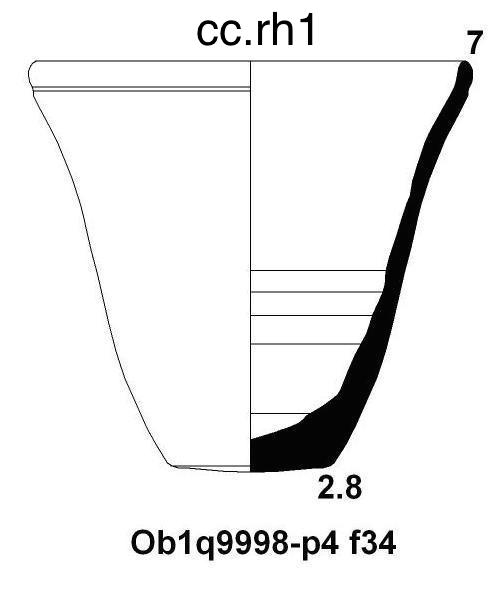 Ob1q9998-p4 |
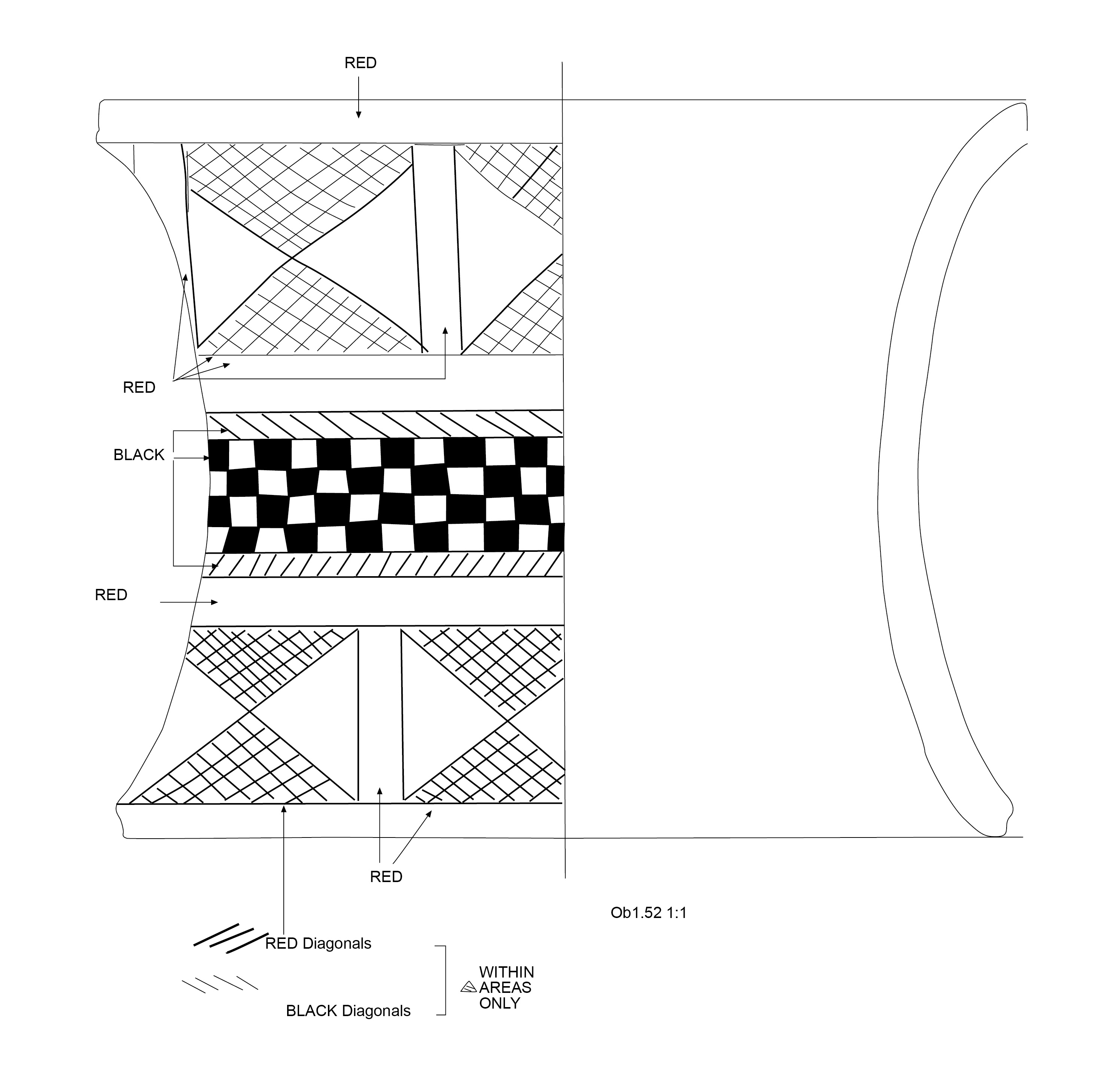
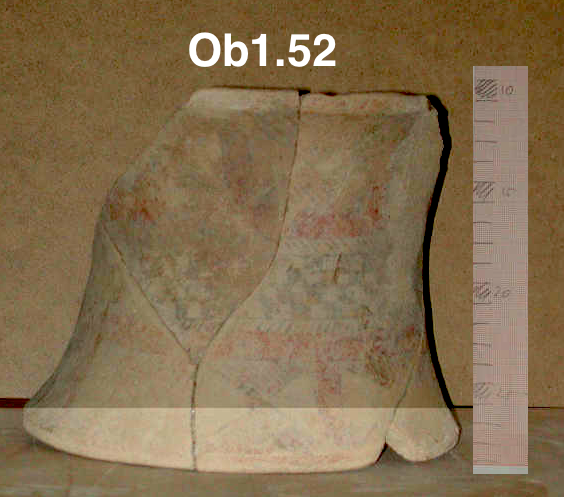
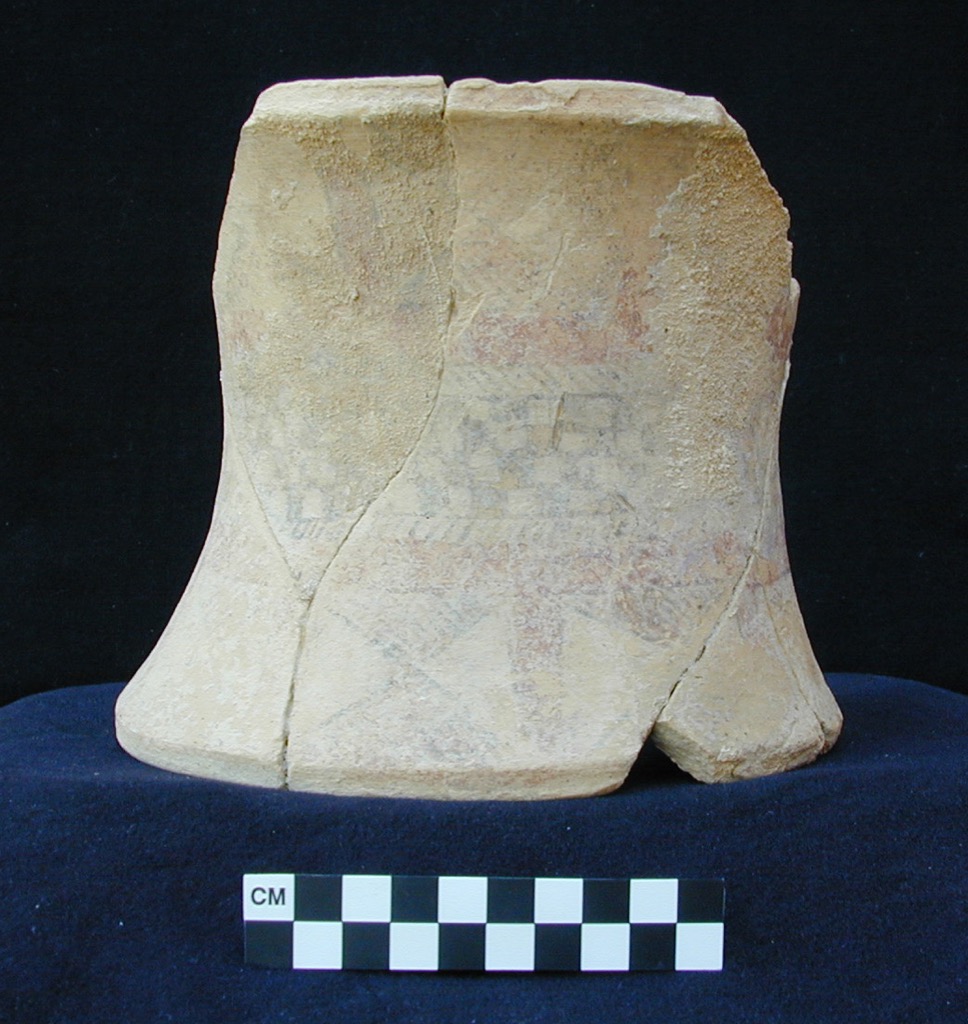
Ob1.52 |
Metallic ware conical cups can have strong wheel marks on both the exterior and interior; the bases are slightly rounded and small in diameter. They are often unevenly fired with both gray and orange on the
exterior and interior (e.g. Ob1.33). In these two tombs few other shapes in Metallic ware were present (e.g. Oa4.32).
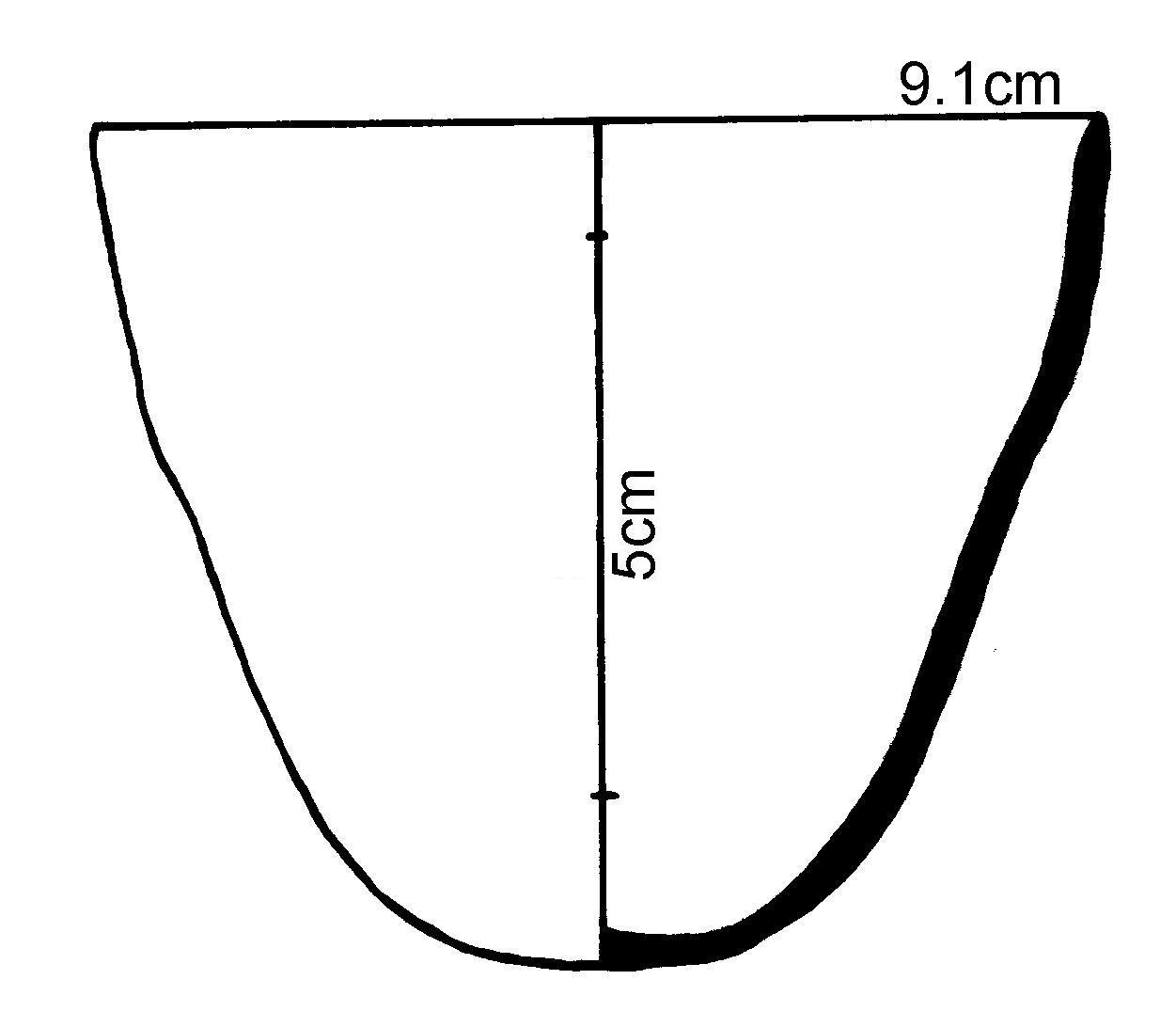
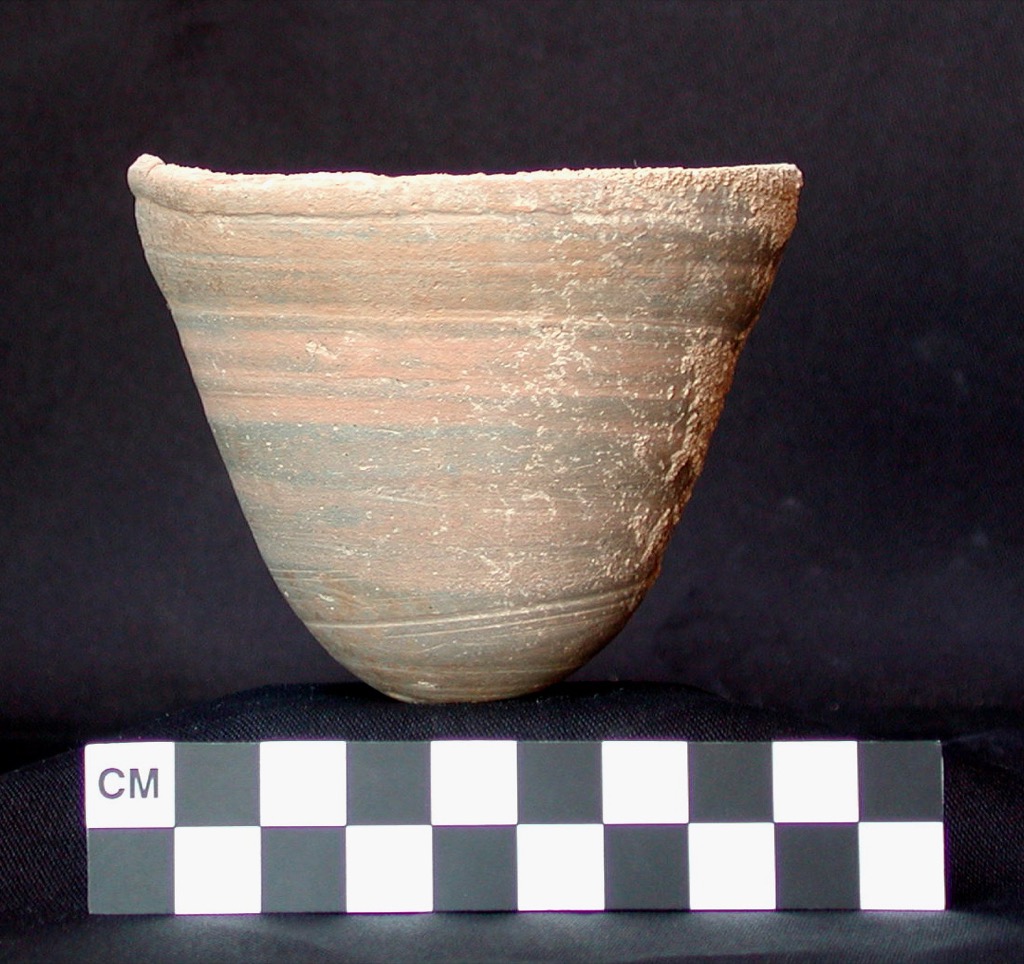 Ob1.33 |
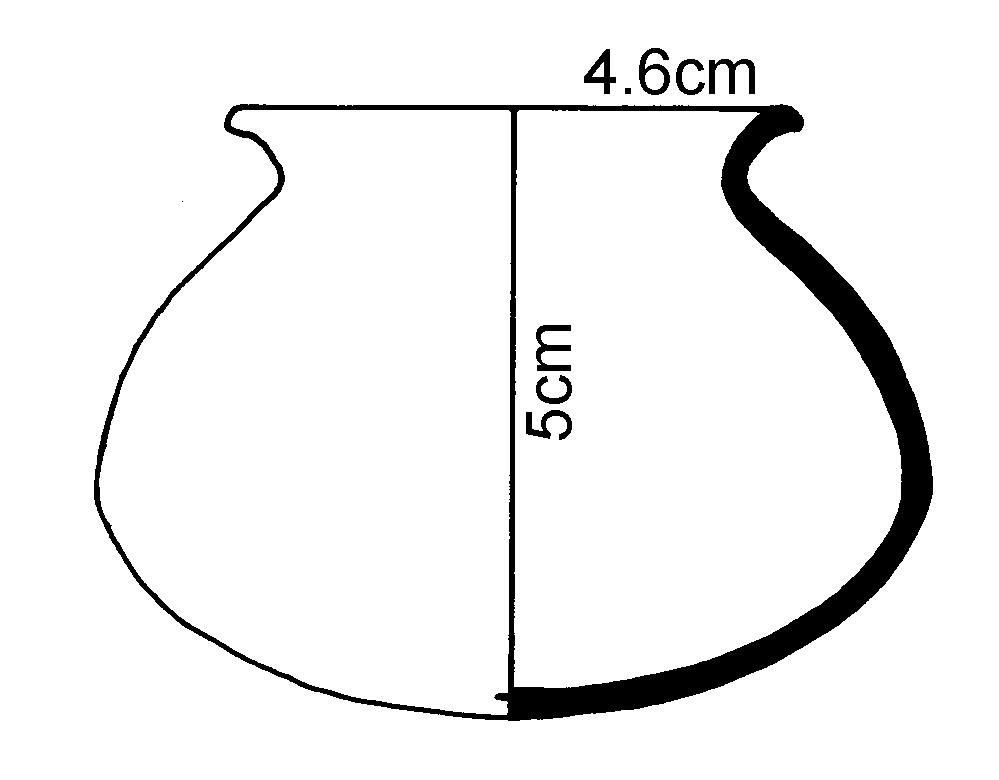
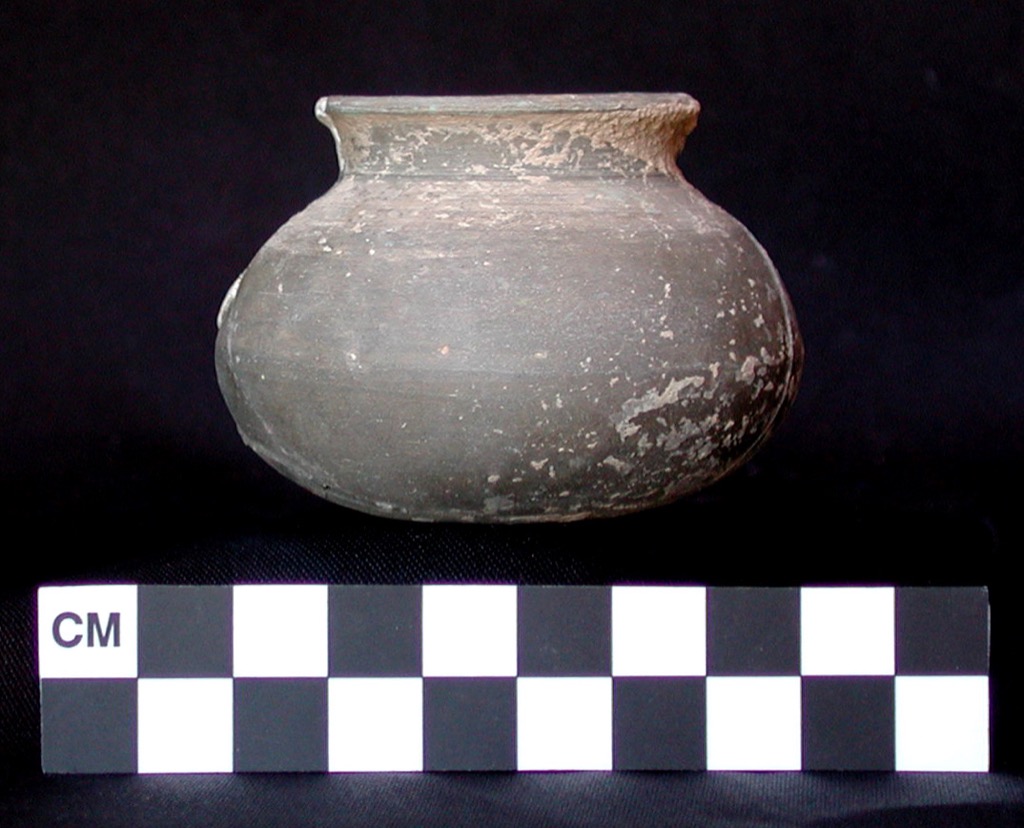 Oa4.32 |
In both Ob1 and Oa4 tombs, larger shapes mainly consisted in hemispheric shaped bowls with geometric designs on the exterior covering from just below the rim down past the widest part of the body (e.g. Ob1.50). Small carinated bowls or cups, both decorated and undecorated were prevalent (e.g. Ob1.38, Oa4q9999-p2).
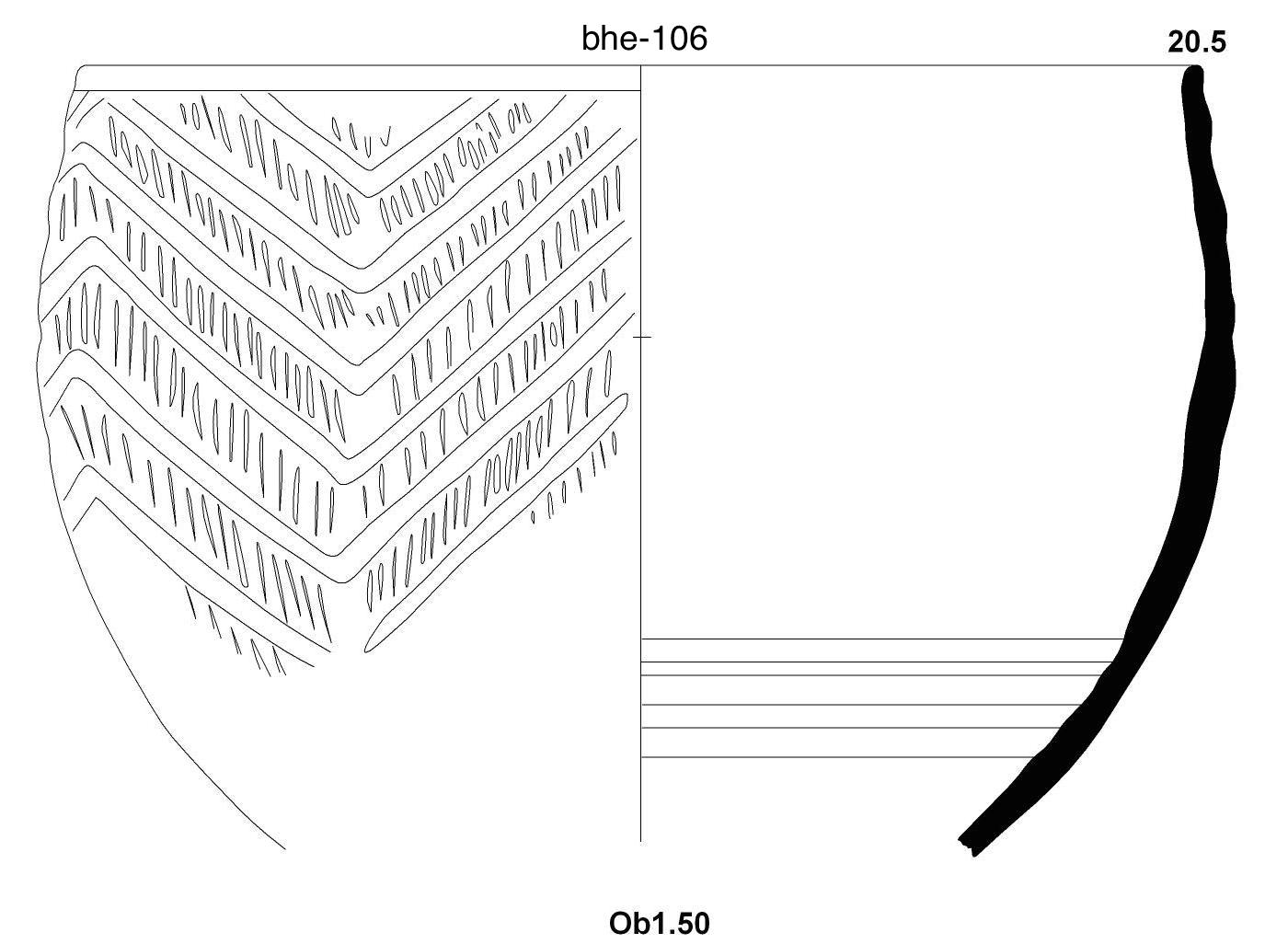 Ob1.50 |
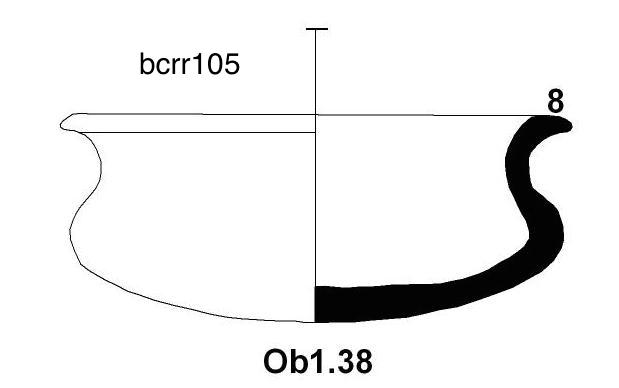
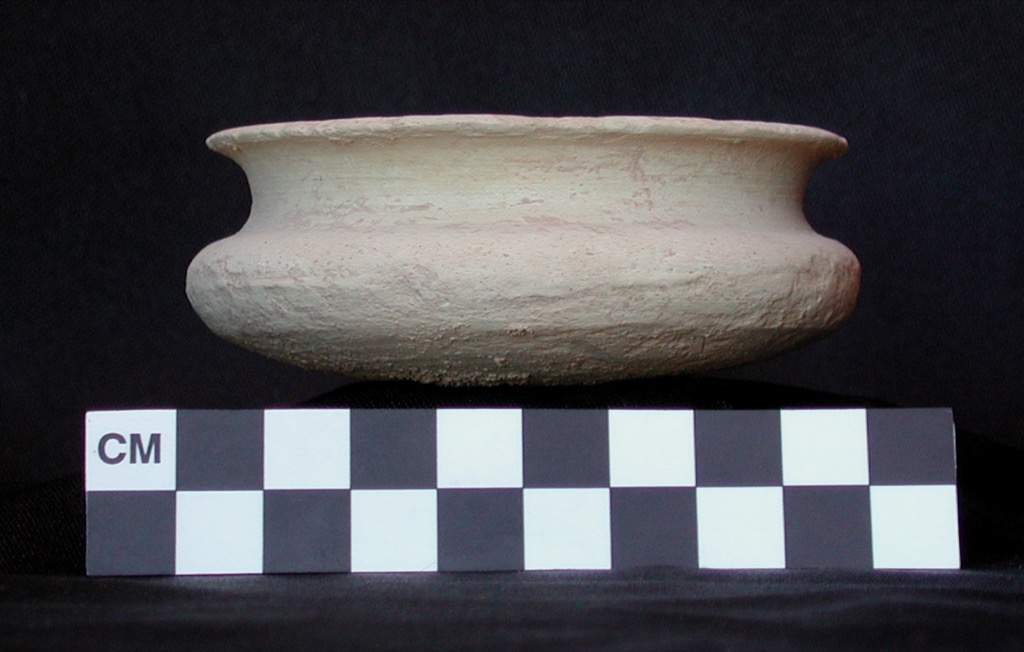 Ob1.38 |
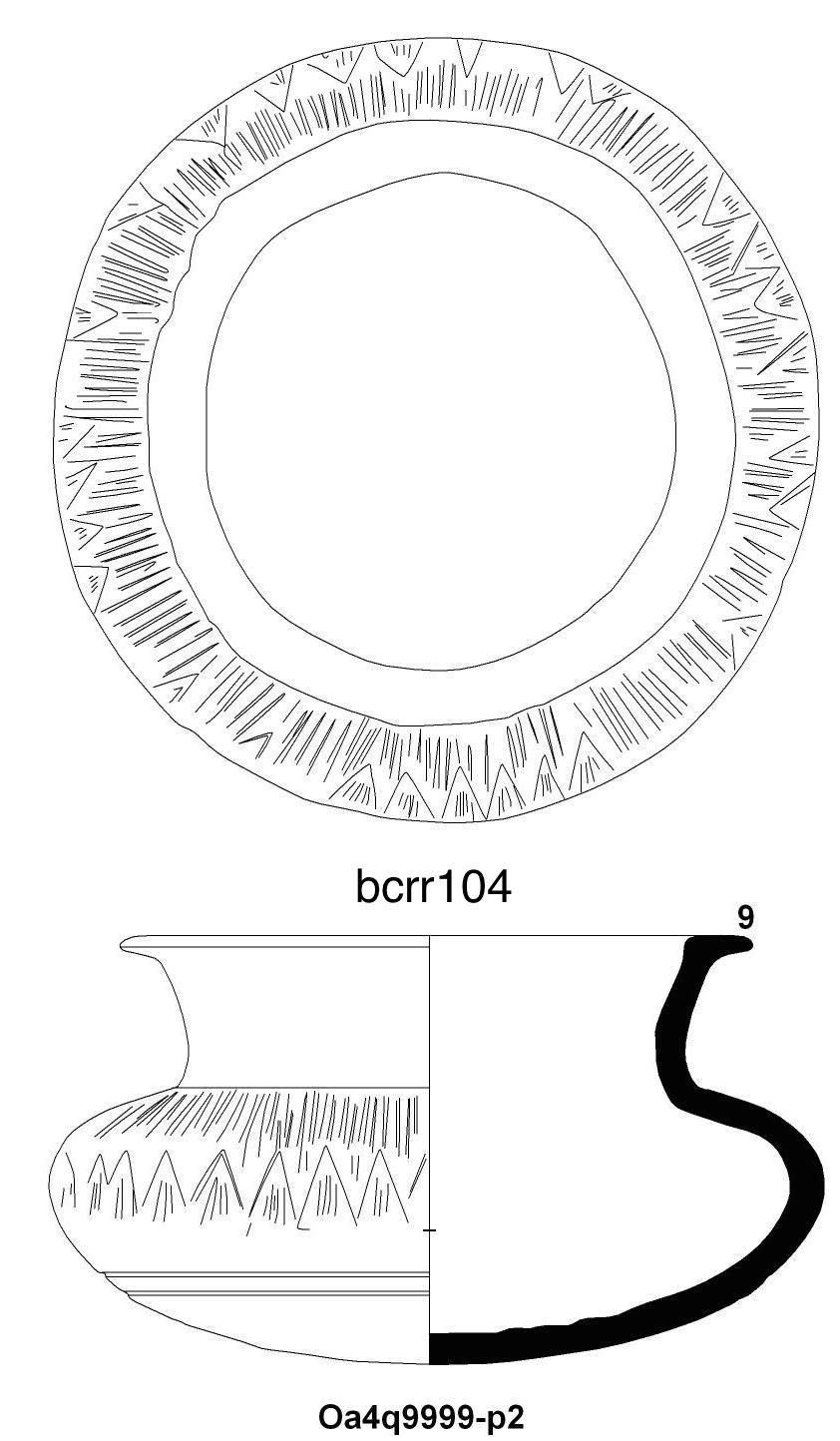 Oa4q9999-p2 |
In the small F2 tomb the vessels were not decorated, linking them to a short-lived Post-Ninevite V phase (e.g. F2.10).
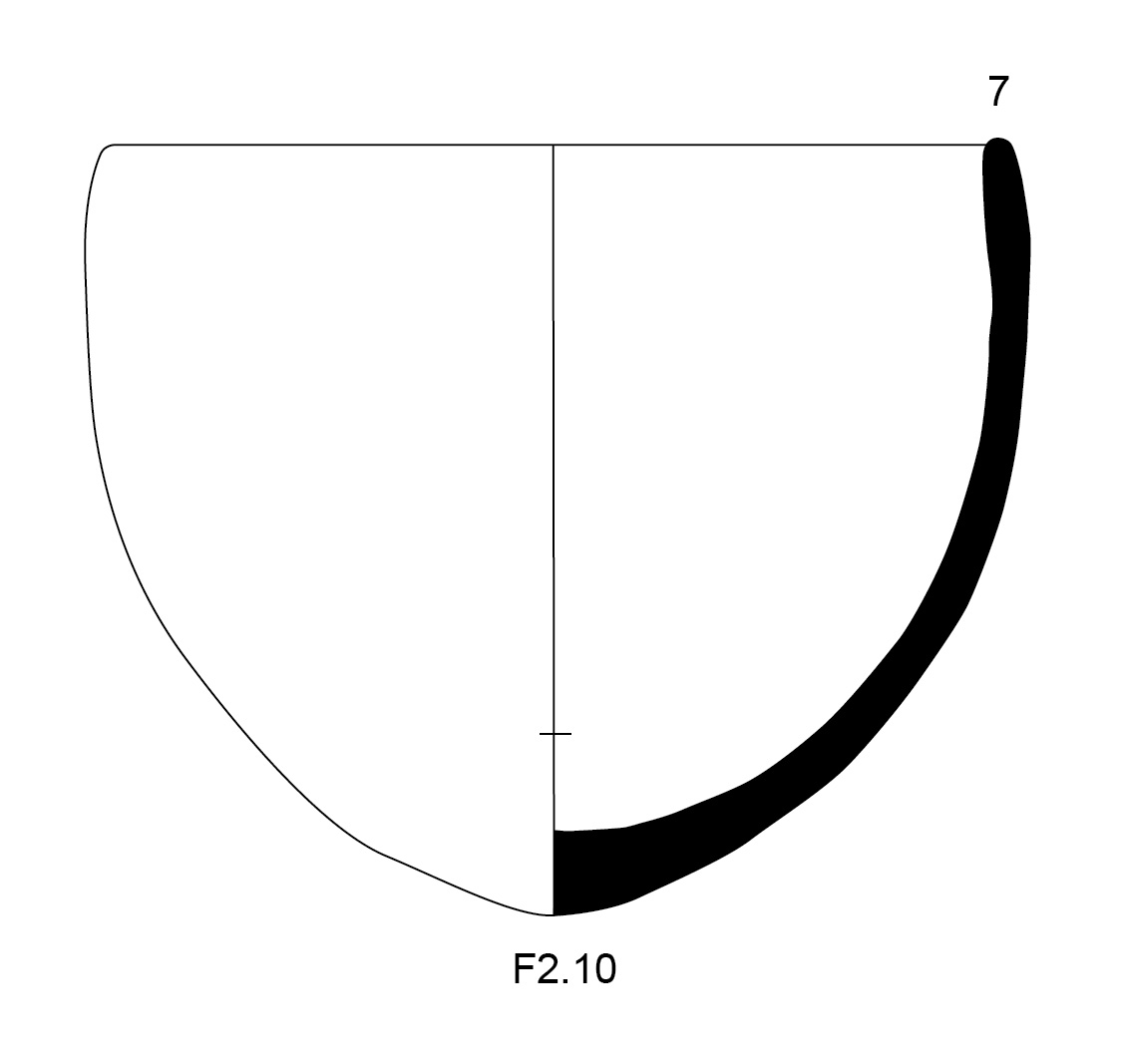
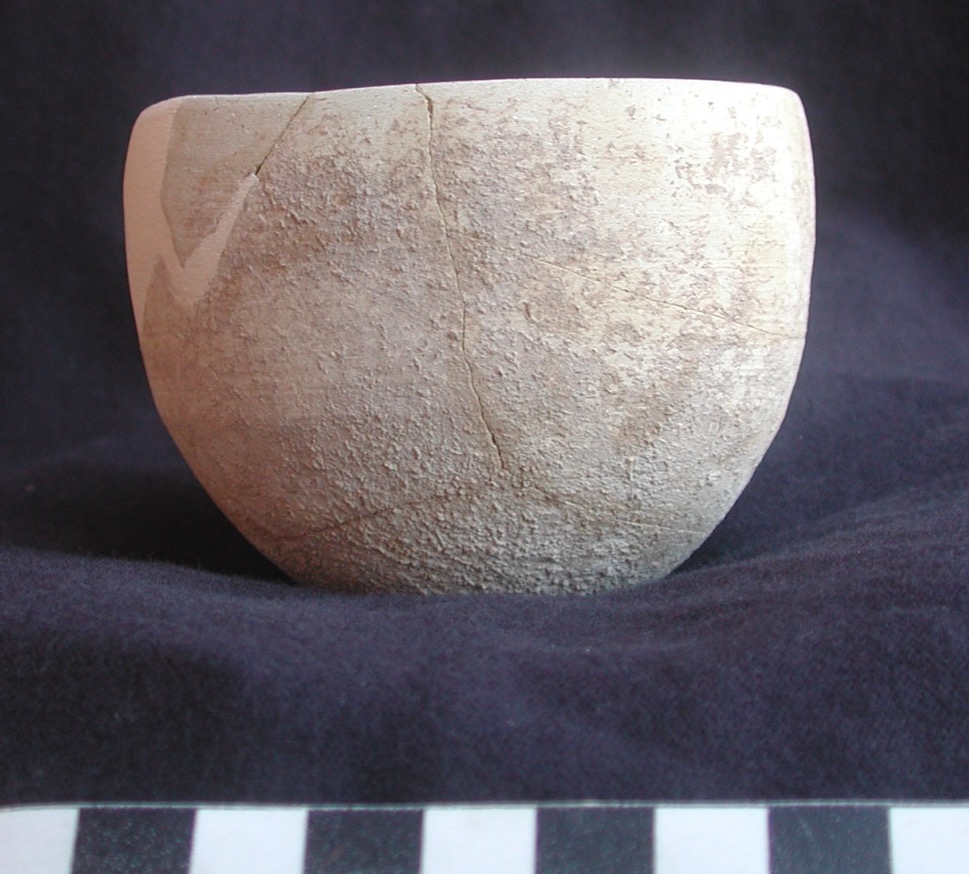 F2.10 |
Post ED II excavated deposits occasionally have random sherds within them including those with early finely incised decoration and those with the later coarser decorative techniques and patterns. In J2, the lowest floors had tiny early and late Ninevite V sherds stratified against an early stairway (J2f380). Very occasionally we found painted Ninevite V sherds mixed in with the later deposits (see UMS 1, Fig. 20, M1 6).
Back to top: Introduction
Notes
1Moortgat, A. & U. Moortgat-Correns (1976), Tell Chuera in Nordost-Syrien: Vorläufiger Bericht über die siebente Grabungskampagne 1974, pp. 64-68, figs. 28 and 30.
Back to top: Introduction